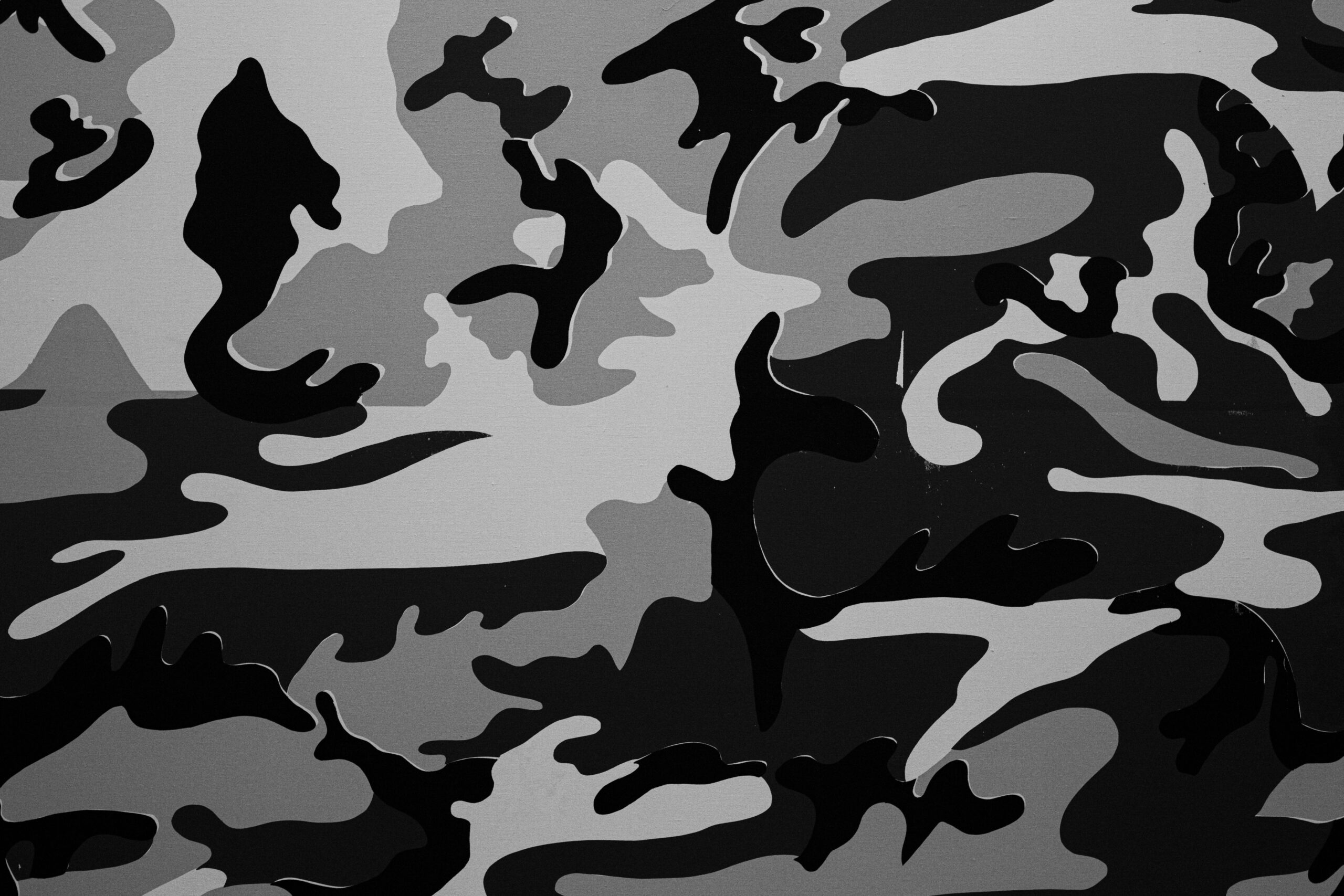Imagine spending a relaxing day out on the water, enjoying the thrill of fishing. Now, picture yourself wearing camouflage clothing. Have you ever wondered if your choice of attire could impact the temperature of your body? In this article, we will explore whether camouflage clothing has any effect on the temperature when fishing. Is there a hidden advantage to donning camo? Let’s find out.
Overview of Camouflage Clothing
Definition of camouflage clothing
Camouflage clothing refers to garments designed with patterns and colors that help the wearer blend into their surroundings, making it difficult for others to detect their presence. The purpose of camouflage clothing is to create a visual illusion that allows individuals to remain hidden or inconspicuous in various environments, such as forests, marshes, or fields.
Typical uses of camouflage clothing
Camouflage clothing finds its practical application in various fields, including military operations, hunting, and outdoor activities like fishing. Its primary goal is to conceal the wearer and provide them with a strategic advantage by minimizing their visibility to potential targets or prey. In fishing, camouflage clothing helps anglers blend in with their surroundings, increasing their chances of catching fish without alarming them.
The importance of camouflage in fishing
Camouflage clothing plays a crucial role in fishing, as it allows anglers to blend in with their surroundings, avoiding detection by fish. When trying to catch fish, it’s essential to go unnoticed, as fish can be easily spooked by the movements and presence of humans. By wearing camouflage clothing that matches the environment, anglers increase their chances of success and improve their overall experience on the water.
Understanding Heat Transfer and Temperature
Explanation of heat transfer
Heat transfer is the process by which thermal energy is exchanged between different objects or systems. There are three modes of heat transfer: conduction, convection, and radiation. Conduction occurs when heat is transferred through direct contact, convection involves the movement of heated particles, and radiation is the transfer of heat through electromagnetic waves.
Impact of clothing on body temperature
Clothing plays a significant role in regulating body temperature. It acts as a barrier between our bodies and the environment, minimizing heat loss or gain. In cold weather, clothing helps retain body heat by trapping air close to the skin. In contrast, in hot weather, clothing can enhance heat dissipation by allowing air to circulate and facilitating sweat evaporation.
How environmental factors influence temperature
Environmental factors, such as sunlight, humidity, wind, and air temperature, can all influence our perceived temperature. For example, direct exposure to sunlight can increase body temperature, while strong winds can accelerate heat loss. Understanding these factors is essential when considering the impact of camouflage clothing on temperature regulation during fishing activities.

Material of Camouflage Clothing
Types of fabric used in camouflage clothing
Camouflage clothing is typically made from a variety of materials, each with its own unique characteristics. Common fabric options for camouflage clothing include cotton, polyester, nylon, and blends of these materials. Cotton is breathable and comfortable, while polyester and nylon offer moisture-wicking properties and durability.
How different materials react to heat
Different fabric materials have varying reactions to heat. Cotton, for instance, is known for its breathability, allowing air circulation and facilitating sweat evaporation. Polyester and nylon fabrics are often used in technical or performance-oriented camouflage clothing due to their moisture-wicking properties, which help keep the wearer dry and cool.
The role of fabric material in temperature regulation
The choice of fabric material in camouflage clothing can impact its ability to regulate body temperature. Breathable fabrics, like cotton, allow for air circulation, preventing overheating. Moisture-wicking materials, such as polyester and nylon, help keep the skin dry, minimizing discomfort caused by sweat. Considering the environmental conditions while selecting the fabric material is crucial for ensuring optimal temperature regulation while fishing.
Color and Temperature
Explanation of how color affects temperature
Color has a significant influence on temperature absorption and reflection. Dark colors, such as black or dark green, tend to absorb more heat from sunlight, leading to higher temperatures. In contrast, lighter colors, like white or light gray, reflect more heat, keeping the surface cooler.
How the color of camouflage clothing can influence temperature
The color of camouflage clothing can impact temperature regulation while fishing. If fishing in hot weather, choosing lighter-colored camouflage clothing may help reflect sunlight, reducing heat absorption and minimizing discomfort. Conversely, in cold weather, darker-colored camouflage clothing can absorb heat and provide additional warmth to the body.
Potential impact of color on fishing comfort and success
Wearing camouflage clothing that matches the environment not only helps with camouflage but also enhances comfort and potentially improves fishing success. When anglers feel comfortable in their clothing, they can focus more on their fishing techniques and remain undistracted. Moreover, highly visible clothing may scare away fish, making it essential to wear appropriate camouflage colors to avoid detection.

Camouflage Clothing and Body Heat Retention
How camouflage clothing retains body heat
Camouflage clothing, especially those made from insulating materials, can help retain body heat in cooler weather conditions. Insulated camouflage garments work by trapping a layer of air close to the body, forming a barrier that slows down heat loss. This trapped air acts as a natural insulator, keeping the body warm by reducing heat transfer to the surrounding environment.
Role of insulation in temperature regulation
Insulation plays a vital role in temperature regulation, particularly in colder fishing conditions. Insulated camouflage clothing provides a layer of protection against chilly winds and low temperatures, enabling anglers to stay comfortable and focused. It prevents excessive heat loss, allowing the body to maintain a stable temperature, reducing the risk of hypothermia or discomfort.
Possible effects of body heat retention on fishing experience
Body heat retention provided by camouflage clothing can offer several benefits to anglers. By preserving body warmth, anglers can withstand cold temperatures for extended periods, increasing their fishing time. Additionally, maintaining a comfortable body temperature helps prevent muscle stiffness and fatigue, enhancing overall performance and enjoyment on the water.
Effects of Weather on Camouflage Clothing Effectiveness
Impact of cold weather
In cold weather, camouflage clothing can be highly effective in helping anglers blend into their surroundings. The winter landscape often adopts shades of white, gray, and brown, making camouflage gear with similar colors crucial for remaining hidden from the sight of fish. Furthermore, insulated camouflage clothing provides the added benefit of keeping anglers warm and protected against icy winds, allowing for a more enjoyable fishing experience.
Impact of warm weather
In warm weather, the effectiveness of camouflage clothing may vary. While the main purpose of camouflage clothing is to blend into the environment, wearing heavy or insulated camouflage gear in hot weather can lead to overheating and discomfort. In such conditions, using lightweight camouflage clothing made from breathable materials becomes essential for maintaining a comfortable body temperature.
Suggestion for adapting to changing weather conditions
Adapting to changing weather conditions is crucial for maximizing the effectiveness of camouflage clothing while fishing. When transitioning from cold to warm weather, anglers can consider layering their clothing or investing in versatile camouflage gear that can be adjusted according to temperatures. Additionally, carrying extra layers or accessories, such as lightweight jackets, hats, or face masks, allows for quick adaptation to changing conditions.

Camouflage Clothing and Sweat Evaporation
Science behind sweat evaporation
Sweat evaporation is a natural cooling mechanism employed by the body to regulate its temperature. When we perspire, sweat evaporates from the surface of the skin, drawing heat away from the body in the process. This evaporation helps cool the body and maintain its optimal temperature.
Influence of camouflage clothing on sweat evaporation
The choice of camouflage clothing can influence sweat evaporation. Materials like polyester and nylon, often used in camouflage clothing, have moisture-wicking properties that help transport sweat away from the body to the outer layer of the fabric, where it can evaporate more easily. This feature aids in keeping anglers dry and comfortable, preventing excessive sweating and potential discomfort.
Correlation between sweat evaporation and body temperature
Sweat evaporation plays a crucial role in regulating body temperature. When sweat evaporates, it absorbs heat from the skin, thus cooling the body. Proper camouflage clothing that allows for efficient sweat evaporation helps maintain a comfortable body temperature, reducing the risk of overheating during fishing activities.
Benefits of Camouflage Clothing in Fishing
Visibility and blending with the environment
One of the primary benefits of camouflage clothing in fishing is its ability to help anglers blend into their surroundings. By wearing camouflage gear that matches the environment, anglers become less visible to fish, increasing their chances of getting closer to their targets without alarming them. This invisibility allows for more successful fishing opportunities and enhances the overall fishing experience.
Protection from elements
Besides providing camouflage, certain types of camouflage clothing also offer protection from environmental elements. Insulated camouflage jackets or waterproof camouflage gear can shield anglers from harsh weather conditions, such as rain, wind, or cold temperatures, ensuring their comfort and safety while on the water.
Temperature regulation and comfort
Camouflage clothing can contribute to proper temperature regulation during fishing. Insulating camouflage garments can help retain body heat in colder weather, while moisture-wicking camouflage materials aid in sweat evaporation, keeping anglers dry and cool in warmer conditions. By maintaining a comfortable body temperature, anglers can focus on their fishing technique and enjoy their time on the water.
Downsides of Camouflage Clothing in Fishing
Potential overheating
While camouflage clothing can provide temperature regulation benefits, there is a risk of overheating in certain conditions. Wearing heavy or insulated camouflage gear in hot weather can hinder heat dissipation, leading to discomfort and potential health risks. It is essential to balance the camouflage effectiveness with comfort and consider lightweight, breathable camouflage clothing options for warm weather fishing.
Reduced breathability
Some camouflage clothing materials may have reduced breathability, particularly if they are heavily insulated or made from non-breathable fabrics. Reduced breathability limits airflow and hinders sweat evaporation, potentially causing discomfort. Choosing camouflage clothing made from breathable materials, or incorporating ventilation features, allows for better air circulation and enhanced breathability.
Comfort issues and possible solutions
Comfort is key when spending long hours fishing, and certain camouflage clothing may have comfort issues like restricted movement or itchiness. Selecting camouflage clothing designed specifically for fishing, with features like elasticated or adjustable waistbands, articulated knees, and soft inner linings, can help alleviate these comfort issues. Additionally, wearing appropriate base layers and moisture-wicking undergarments can enhance overall comfort while fishing.
Recommended Camouflage Clothing for Various Fishing Conditions
Best clothing for hot weather
When fishing in hot weather, lightweight camouflage clothing made from breathable materials, such as polyester or nylon, is recommended. Look for garments with moisture-wicking properties and enhanced airflow, allowing for sweat evaporation and effective heat dissipation. Choosing lighter colors that reflect sunlight can also help minimize heat absorption and maximize comfort.
Recommended attire for cold weather
In colder fishing conditions, insulated camouflage jackets, pants, and accessories become essential. Opt for camouflage clothing made from insulating materials such as fleece, down, or synthetic fibers, as they provide warmth without excessive bulkiness. Layering multiple garments allows for flexibility in adapting to changing temperatures and provides better insulation against cold winds.
Essential considerations when choosing camouflage clothing for fishing
When selecting camouflage clothing for fishing, several factors should be considered. The primary focus should be on matching the camouflage pattern and colors to the fishing environment for effective concealment. Additionally, prioritizing comfort, breathability, and temperature regulation by choosing appropriate fabric materials and features like moisture-wicking, ventilation, and adjustability will enhance the overall fishing experience. Finally, ensuring the clothing is suitable for the specific weather conditions is crucial for optimal performance and protection.
In conclusion, camouflage clothing plays a significant role in fishing by providing effective concealment, enhancing comfort, and contributing to temperature regulation. The choice of fabric materials, color selection, insulation properties, and consideration of weather conditions all influence the performance and effectiveness of camouflage clothing. By understanding the impact of camouflage clothing on temperature regulation and adapting to different fishing conditions, anglers can maximize their chances of success and enjoy a comfortable fishing experience.

